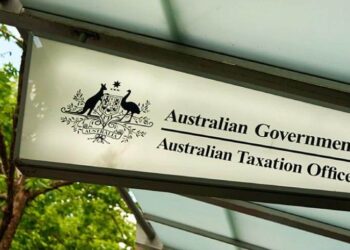On Monday 4 April 2022 the Government made new laws impacting pensions (see the Treasury Laws Amendment (Allowing Commutation of Certain Income Streams) Regulations 2022 (Cth)). Those in particular with legacy pensions should pay close attention!
Over 200 years ago, on 7 March 1795, English newspaper The Hull Advertiser announced that ‘[t]he licence to wear hair powder will be commuted for a tax on powder itself.’
Naturally, the new laws passed on Monday do not affect hair powder. However, they do affect commutations! Although this is hardly a case of history repeating itself, these new laws, like the commutation of the licence to wear hair powder in 1795, are definitely newsworthy!
Firstly, what the new pension laws do NOT cover
The 2021-22 Budget (ie the Budget announced in May 2021) said that it would give older Australians the choice to move out of legacy retirement products. It announced that a two-year period will be provided for exiting market-linked, life-expectancy and lifetime pension and annuity products. It suggested that two-year period would commence on 1 July 2022. It said that any commuted reserves will not be counted towards an individual’s concessional contribution cap and will not trigger excess contributions. Instead, they will be taxed as an assessable contribution of the fund (with a 15 per cent tax rate), recognising the prior concessional tax treatment received when the reserve was accumulated and held to pay a pension.
Industry was excited by this announcement. However, the announcement is still just that: an announcement. It is yet to be legislated. The new laws that have been made do not relate the Budget announcement. They are a different kettle of fish.
What the new pension laws DO cover
Background
In mid-2017 the transfer balance cap and related legislation commenced using the term ‘capped defined benefit income stream’ (CDBIS) to refer to certain legacy pension and annuity products. Relevantly for SMSFs, a CDBIS can be any of the following pensions that was also in the ‘retirement phase just before 1 July 2017’ (emphasis added):
- a complying lifetime pension (ie, a pension paid pursuant to reg 1.06(2) of the Superannuation Industry (Supervision) Regulations 1994 (Cth) (SISR));
- a life expectancy pension (ie, a pension paid pursuant to reg 1.06(7) of the SISR); and
- a market linked pension, also known as a term allocated pension (ie, a pension paid pursuant to reg 1.06(8) of the SISR).
Naturally, pensions that are CDBISs have severe restrictions on when they can be commuted.
Many CDBISs resulted in the pensioner receiving a credit to their transfer balance accounts being in excess of the transfer balance cap (originally $1.6 million) without a modification to the transfer balance rules. Because these CDBIS have severe restrictions on when they can be commuted, there was little a pensioner could do regarding the excess. Accordingly, a special exception for CDBISs and the transfer balance credit was included in the legislation. As a result, CDBISs by themselves, cannot result in excess transfer balance (ie, assuming there are no other non-CDBIS retirement phase products that could cause an excess).
However, a problem was still left. Namely, note that, as alluded to above, in order to be a CDBIS a pension must have been, among other things, in ‘retirement phase just before 1 July 2017’. If, for example, a CDBIS was commuted on or after 1 July 2017 and a new market linked pension was commenced with the resulting lump sum, the new market linked pension would not be a CDBIS (ie, because it was not in ‘retirement phase just before 1 July 2017’).
Accordingly, the modified transfer balance cap rules for CDBISs would not apply. Accordingly, the new market linked pension would cause an excess transfer balance and the pension was unable to comply with any transfer balance cap rules!
This situation calls to mind the classic paradox: ‘What happens when an unstoppable force meets an immovable object?’ — ie, where the excess transfer balance regime and ATO commutation authority is standing in for the ‘unstoppable force’, and the non-commutable legacy pension is standing in for the ‘immovable object’.
In short, there was no clear solution to this issue, and taxpayers who had restructured their large CDBIS pensions on or after 1 July 2017 were potentially faced with a perpetual excess transfer balance tax issue to manage.
New laws
The new pension laws address the problem described above by enabling the pensioner to undertake commutations to resolve the excess transfer balance. Critically, as part of this, a market linked pension that would usually be a CDBIS but was not in existence just before 1 July 2017 can now be commuted in order to comply with commutation authorities issued by the Commissioner (ie, to resolve excess transfer balance amounts).
Naturally, there are many more detailed mechanisms in the new laws, and potentially some exciting opportunities that may be available under the new laws, which we don’t consider in this article. However, those for whom CDBIS restructures are relevant should:
- read in detail the exact instrument inserting the new laws and its explanatory statement (available at https://www.legislation.gov.au/Details/F2022L00511 and https://www.legislation.gov.au/Details/F2022L00511/Explanatory%20Statement/Text respectively); and ideally
- obtain expert advice.
By Bryce Figot and William Fettes, DBA Lawyers


